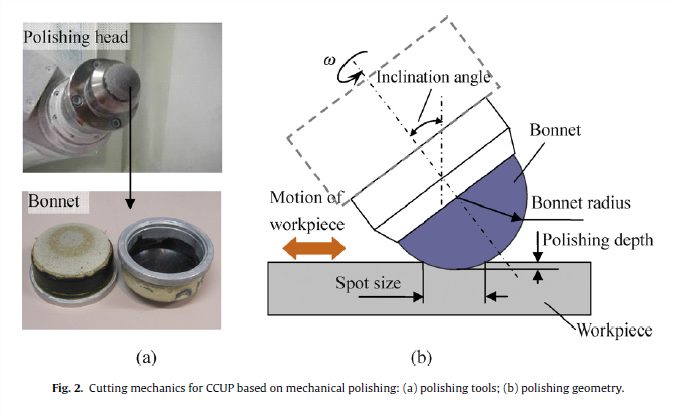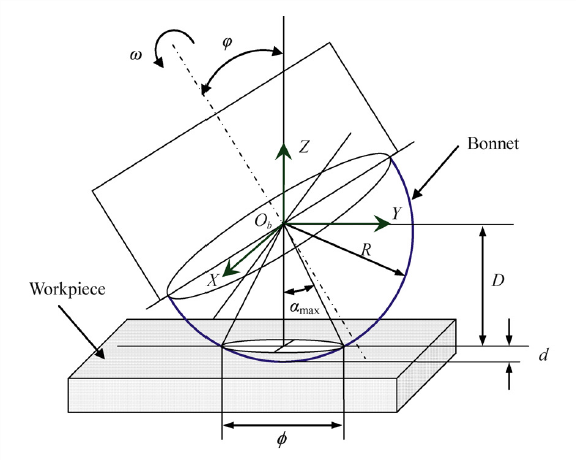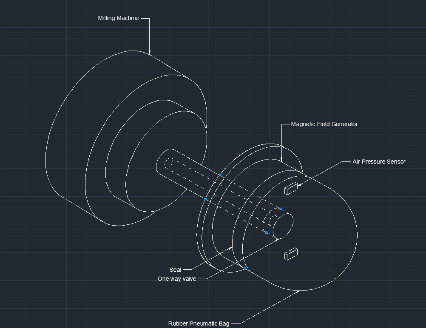Precision Micro-Machining Lab Research Projects
Pneumatic Polishing
Suyash Niraula
The application of Pneumatic Polishing (PP) technique is fairly new, and the research on the great potential is far from complete. This paper presents the theoretical investigation of achieving promising results in the field of ultra-precision manufacturing by using Pneumatic Polishing. The polishing tool is first designed, then tested which will allow for further investigation experimentally, thus establishing a complete pneumatic polishing experiment platform. Once that has been established, designed experiments will provide a better insight in regards to the validation of the tool design and factors that influence the results.
A theoretical model that accurately predicts results of pneumatic polishing processes is to be developed, followed by a comprehensive study of the effect of various variables in order to validate those findings is the main goal of this paper. Precise prediction of the material removal rate and surface roughness of the workpiece is governed by many factors, of which is the cutting effect of mixed abrasive particles also will be studied in depth. The theory follows the bonnet polishing tool presented in many recent papers such as the CCUP C.F. Cheung, L.B. Kong, L.T. Ho, and S. To, the below figures are borrowed from their paper.



Experimental Setup involves the use of a milling machine that will help achieve the desired degrees of freedom thus flexibility of working with free-form surfaces, designing and manufacturing the polishing tool, the use of necessary machines to help investigate the results and gain better knowledge about the polishing process. High bay area at the North Engineering Building of the College of Engineering with available equipment will be utilized.
Design of Experiments might involve a full factorial trials, that will include but not limited to the following factors; rotational speed of the polishing tool, inflation pressure, depth of contact, inclination angle of the polishing tool with respect to the workpiece centerline, type and size of abrasive particles, feeding rate, polishing time…etc. The experimental design will help conduct the necessary study and data gathering to develop relationships between the surface roughness, material removal rate from one side and the changing variables from another side.
Expected results and conclusions; at the end of this project, a novel pneumatic polishing technique that utilizes the latest technologies shall be developed to enhance the existing polishing market. Surface roughness and accuracy, material removal rate, and process efficiency are the quantitative deliverables that are expected to be studied. In the sense of scientifically good results, this will build on a basis for a model which is capable of forecasting results.


